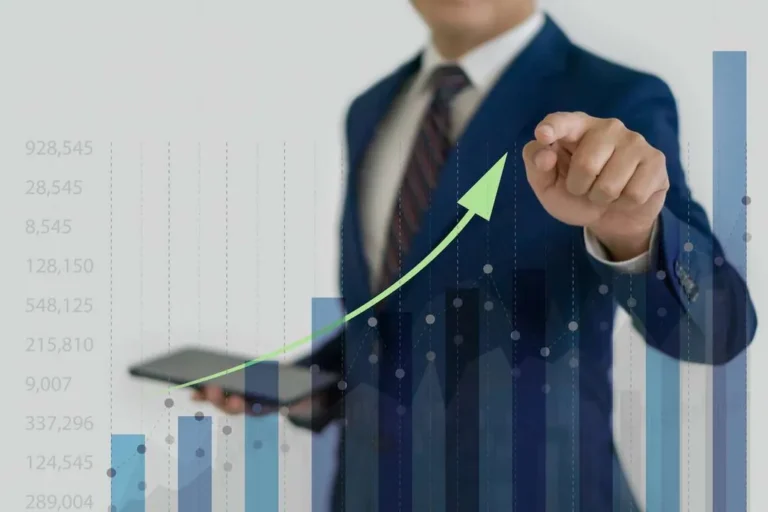Content
Algorithmic trading involves using computer algorithms to automate trading decisions. These algorithms follow a Non-fungible token predefined set of rules or instructions to execute trades based on various factors such as price, timing, and volume. It’s essentially a method that eliminates human errors and emotional biases, leading to more efficient and effective trading.
Algorithmic Trading Strategies: Basic to Advanced Algo Overview
The result shows a good potential for an interesting strategy in this category. More validation work is needed before putting it live with real money, but it’s a positive outcome. Our bias strategy has a win/loss ratio of %KEYWORD_VAR% 1.22 – this ratio indicates how many times a strategy will perform successful, money-making trades relative to how many times it will have money-losing trades. If you are into Microsoft Excel and you know how to use it for data analysis, you can do those tests using Excel; it will take longer, but it is possible.

What are the algorithms used in algorithmic trading?
Algo trading is faster than manual trading being one https://www.xcritical.com/ of the key benefits of this approach. Machines are capable of analyzing large quantities of market data and effect transactions in a matter of milliseconds something that cannot be done by hand. This swift execution lets a trader get involved in the market immediately.
Cool Augmented Reality Examples To Know About
In essence, mean reversion strategies are based on the idea that asset prices revert to the average over a period of time so they aim to find areas where price is far away from the average and bet on its return. You can also use these APIs to execute trades from an algorithm running on your computer or a virtual private server (VPS). However, there are alternatives like EasyLanguage which was specifically developed to reduce the level of coding knowledge necessary for algorithmic trading. For example, you could create a trading algorithm that buys the S&P 500 index every time it drops 10% from a recent high and then automatically closes the trade when it reaches your profit target.

Forward testing the algorithm is the next stage and involves running the algorithm through an out of sample data set to ensure the algorithm performs within backtested expectations. When the current market price is less than the average price, the stock is considered attractive for purchase, with the expectation that the price will rise. When the current market price is above the average price, the market price is expected to fall. In other words, deviations from the average price are expected to revert to the average.
HFT is a subset of algorithmic trading where large volumes of trades are executed at incredibly high speeds. HFT algorithms aim to profit from small price discrepancies that occur within very short time frames, often milliseconds. Mean reversion strategies are based on the assumption that asset prices will revert to their mean or average value over time. These algorithms look for overbought or oversold conditions and execute trades to profit from price corrections. Creating and deploying algorithmic trading strategies requires a deep understanding of financial markets and programming skills.
The underlying idea is that these stocks will continue to move in the same direction due to market sentiment and investor psychology fueling the trend. In this way, the trader isn’t forced to stand 24/7 in front of a screen as is the case in discretionary trading. Thanks to algorithmic trading, it’s possible to trade simultaneously on a multitude of markets, with different approaches, strategies and timeframes. This code initiates a buy order when the fast-moving average crosses above the slow-moving average, signalling an uptrend.
Despite this, black box algorithms are popular in high-frequency trading and other advanced investment strategies because they can outperform more transparent and rule-based (sometimes called “linear”) approaches. The most common algorithmic trading strategies follow trends in moving averages, channel breakouts, price level movements, and related technical indicators. These are the easiest and simplest strategies to implement through algorithmic trading because these strategies do not involve making any predictions or price forecasts. Trades are initiated based on the occurrence of desirable trends, which are easy and straightforward to implement through algorithms without getting into the complexity of predictive analysis.
The choice, therefore, depends on the goals, characteristics and needs of each trader. A trading system is a set of rules that determine when and what orders to send to the market to open or close a position based on precise parameters (such as price patterns) preset by the trader. Algorithmic trading can be suitable for individual investors with the necessary technical skills, financial knowledge, and capital. However, it’s essential to understand the risks and complexities involved and to be prepared for the ongoing costs and regulatory requirements. There was an immediate placement of sell orders for securities in this crisis. There were also fast withdrawals of trade orders for deposits and high-frequency trades.
Next on the list is to build your specialized finance knowledge that will set the foundation for successful strategies. There are also issues to consider such as technical errors, coding bugs, and WiFi issues. Thomas J Catalano is a CFP and Registered Investment Adviser with the state of South Carolina, where he launched his own financial advisory firm in 2018.
Unless you’ve already been trading for a while, it’s a good idea to start by learning the fundamentals of financial markets. While there are tools and platforms that can speed up your algo trading journey, getting started still requires a hefty dose of self-study and preparation. However, the practice of algorithmic trading is not that simple to maintain and execute. Remember, if one investor can place an algo-generated trade, so can other market participants.
HFT leverages speed to make small profits on high-volume trades, often across milliseconds. Based on the idea that prices eventually revert to their average, this strategy identifies overbought and oversold conditions, typically using indicators like RSI and Stochastic Oscillator. To understand how a quantitative stock fund uses algorithmic trading, let’s imagine a situation with a fictional stock called the Intergalactic Trading Company, which has the ticker “SPAACE.”
- In finance, delta-neutral describes a portfolio of related financial securities, in which the portfolio value remains unchanged due to small changes in the value of the underlying security.
- Automation and complex algorithms trade securities at a blistering speed, shaping financial exchanges – and investors can use this algorithmic trading to their advantage.
- This reduces the chances of human errors, such as misplacing orders or mistiming trades.
- Overfitting a strategy to historical data may create an illusion of reliability, while in reality, the strategy could perform poorly in live trading.
- The dramatic evolution trading has undertaken in recent years can’t be overstated.
- Our suite of highly accurate indicators on TradingView is precisely crafted to enhance your trading decisions.
Before deciding to trade forex, commodity futures, or digital assets, you should carefully consider your financial objectives, level of experience and risk appetite. You should consult with appropriate counsel or other advisors on all investment, legal, or tax matters. References to FOREX.com or GAIN Capital refer to StoneX Group Inc. and its subsidiaries. This creates opportunities for algorithmic traders to exploit the trades that will have to take place, by buying and selling the shares that will be added and removed or reduced from the funds.
